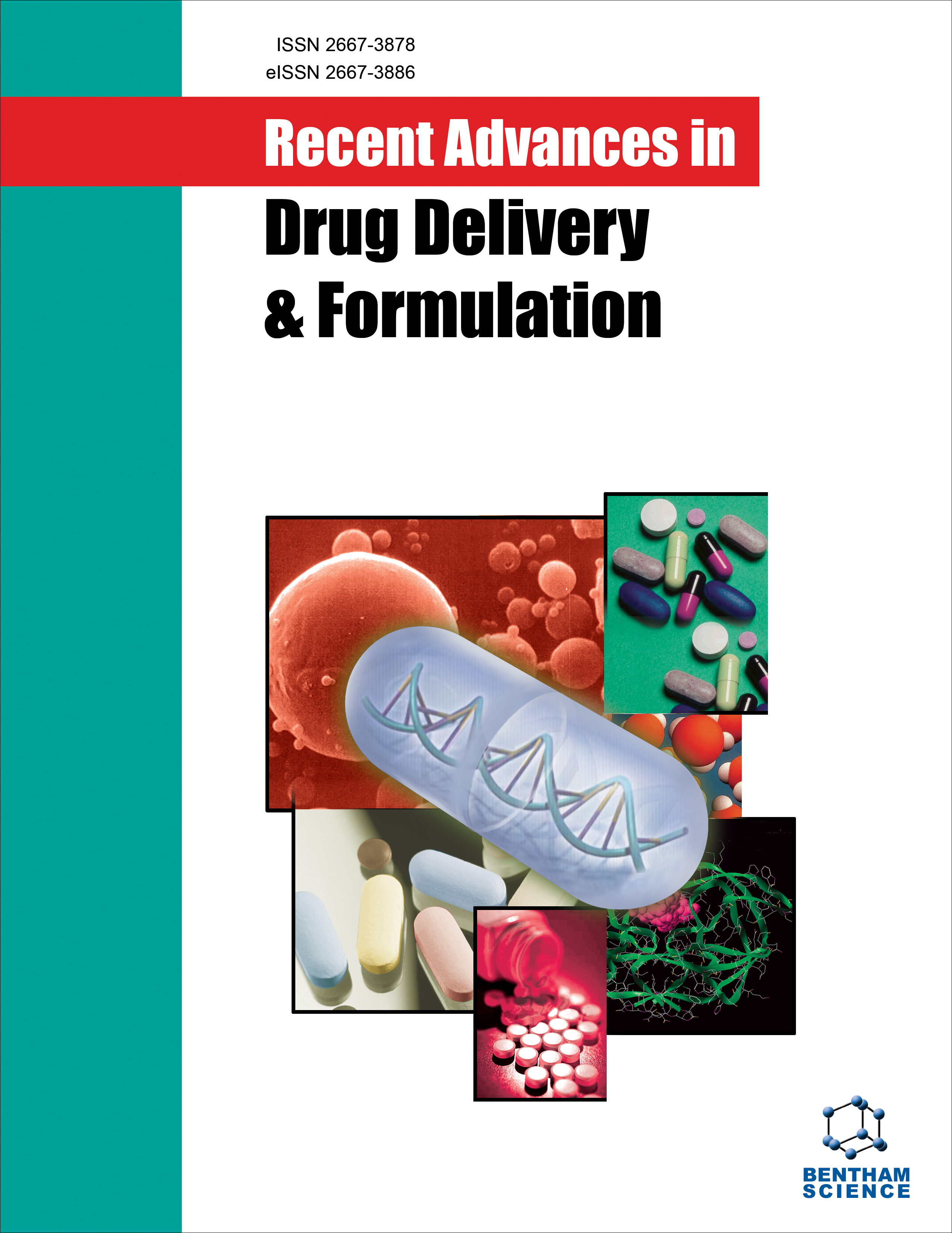- Home
- A-Z Publications
- Recent Advances in Drug Delivery and Formulation
- Previous Issues
- Volume 18, Issue 3, 2024
Recent Advances in Drug Delivery and Formulation - Volume 18, Issue 3, 2024
Volume 18, Issue 3, 2024
-
-
Liposomal Drug Delivery: Progress, Clinical Outlook, and Ongoing Challenges
More LessAuthors: Chanchal Tiwari, Jigyasa Tomer and Dharmendra KumarThe liposomal drug delivery system is considered an advanced drug delivery technology for formulating lipid core nano-structured particles using lipids from natural and synthetic sources. Liposomes play a wide role in improving drugs with less solubility and greater toxicity profile. Liposomes have numerous advantages, such as enhanced drug loading, good biocompatibility, prolonged drug release profile, and better pharmac Read More
-
-
-
Functionalised Ligand-Based Nanomaterial Drug Targeting Approaches for Colorectal Cancer Therapy
More LessAuthors: Amol A. Dixit, Deepa S. Mandlik and Satish K. MandlikCancer refers to a condition in which abnormal cells uncontrollably divide, resulting in the destruction of tissues. In colorectal cancer, uncontrolled cell proliferation takes place in the rectum or colon. Most colorectal tumors start as adenomas, a form of polyp that can develop into cancer within the rectum or colon. Symptoms of colorectal cancer include chronic diarrhea or constipation, bleeding from the rectum, bloody stools, c Read More
-
-
-
Advancements in Micellar Formulation: Drug Delivery Vehicle for Water-Insoluble Drugs
More LessAuthors: Lokesh Sharma, Divya Khurana, Preeti Patel, Satyam Khare and Balak D. KurmiMicellar systems, particularly polymeric micelles, have emerged as a promising drug delivery vehicle for water-insoluble compounds. Polymeric micelles, self-assembled nanostructures made from amphiphilic block copolymers, have emerged as a promising drug delivery vehicle for water-insoluble compounds. These micelles offer high drug loading capacity, stability, and the ability to solubilize large amounts of hydrophobic Read More
-
-
-
Enhanced Oral Bioavailability and Stability Studies of Loratadine Tablets Based on Solid Dispersion of Modified Ziziphus spina-christi Gum
More LessBackground: Solid dispersion is a common technique used for solubility enhancement of poorly soluble drugs. Objective: In this study, loratadine (LOR), a class II biopharmaceutical classification system (BCS), was formulated as solid dispersion tablets using modified Ziziphus spina-christi gum (MZG) as a carrier. Methods: The solvent evaporation method was used for LOR-MZG solid dispersion (SD) preparation. A variety of tests Read More
-
Volumes & issues
Most Read This Month
Article
content/journals/raddf
Journal
10
5
false
en


